"The Woman in Black": Everything Old Is Good Again
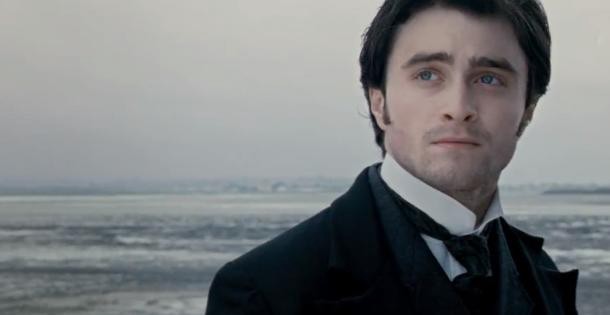
Horror movies are beset with misconceptions, the greatest being: “How can you watch those things!? They’re all fatuous violence and gratuitous boobs!” Which is kindof like saying, “How can you read those feminist blogs?! They’re all alluvial deposits of man-hating penis envy!”
The truth is that the horror canon, like any other film group, contains a vast spectrum of work ranging from smack-somebody awfulness to transcendence. The only thread holding it all together is that every horror film DEMANDS something of you — that you abandon the safe, bucolic cognition of your daily reality and confront the darker aspects of being alive. Some movies do this by plopping a likable protagonist in a haunted-to-the-gills mansion. Others do it through crotch-stabbing intestine-smearing celebrations of mayhem. The Woman in Black (opening today!) is of the former ilk, and it’s a reason in itself to drop the Judgment McJudgeypants routine and take your ass to see a horror movie.
Part of WiB’s greatness lies in its restorative role: It marks the real resurrection of Hammer Film productions. (Hammer also produced Let Me In.) If you’re not familiar with Hammer, here are two words to jog your memory: Vincent Price Christopher Lee.
From the 1950s to the mid-’60s, one film company dominated the horror market, churning out megahits like The Curse of Frankenstein and The Brides of Dracula. (Snicker you may, but these were the popularity equivalent of Iron Man II.) With nary a chainsaw in sight, Hammer films celebrated the broody glamour of Victorian abstruseness, packing every shot with heaving bosoms and British countrysides. They made household names of thespian giants like Christopher Lee (one of the great Draculas of all time), Peter Cushing (Victor Frankenstein, aka the best thing in Star Wars), and of course, His Royal Price (if you don’t know his work, there’s no hope for you. Just kidding — get thee to Wikipedia!). Hammer films were the antithesis of slashers — Hammer honed its focus to monstrous aristocrats who terrorized innocent farm lasses in the night. Grand orchestral scores accompanied kidnappings of virgins, townsfolk bearing pitchforks and the occasional burning at the stake. While the nukes proliferated around them, moviegoers were entranced with the mystery and casual brutality of the pre-industrial world.
Then came the hyperrealism of the ’70s, and things got all Last House on the Left. Horror abandoned its sense of wonder in favor of grisly torture scenes set to Moog synthesizers. Forget the mummies or doleful Dracula — we found the true monster, and it was us.
Cut to modern day, where Hammer has staged a grand return just as our taste for realism is reaching its saturation point. (Right? I mean come on, you can watch every sick and twisted vagary of humanity on your smartphone while eating a bagel, so do we really need more movies full of hapless teens injected with hydrofluoric acid?) And what better cultural trademark to usher in the new era than Harry Potter himself? Daniel Radcliffe was made for oldfangled ghost movies — his expression of clenched stoicism must be a near-reflex after 10 years of Voldemort’s BS.
With Radcliffe at the fore, Hammer reclaims its place in pop culture with no explanations, as if 40 years of fevered tech-transmutation hadn’t happened. Here we are, right back in the Victorian small town, where life is segmented by stone walls, hedge rows and gloppy English bogs ( Saw? What Saw?). The movie does this setting perfectly — every chamberwick and copper pot is perfectly placed and weighted. Even the wood panels lining a train car evoke an emotional response. Radcliffe’s character, a grieving solicitor struggling to support his son after the wife dies in childbirth (another fun Victorian fear) finds himself in precisely the sort of situation one would encounter before solar-powered GPS systems and turbo engines and Gchat: He must travel to a remote village to settle the estate of a now-deceased widow. Her house, natch, is a repository of undead angst located smack in the middle of a fog-infested moor. Kudos to the prop designer for assembling this gothic paradise, where even the sconces ooze creepiness. One plot point revolves around the single scariest collection of toys since Poltergeist — it’s a virtual madness menagerie (which presents the question, how was every nineteenth-century child not frightened into a coma by age 4?).
Radcliffe and his spectral companions usher us, the tech-saturated seen-it-all generation, back to this perfect era just before communication and transportation blew up and spoiled all the ghostly fun. WIB proves a valuable point: that modern moviegoers can be entertained by a man, his mutton chops, and a fantastically spooky house. The film contains no huge surprises, and there aren’t SUPPOSED to be any — you know when Radcliffe looks in the window and the director cuts to an external shot of his face that a ghost will pop out behind him. But it’s STILL SCARY ANYWAY. For the simple reason that we are human beings, and we possess a nervous system that responds in predictable ways to an established set of stimuli. If you prime us with 20 minutes of ominous music and creepy imagery and then slap a ghost in our faces, WE WILL BE SCARED, whether we like/admit/Tweet it or not. We can still participate in that delicious shared experience of humanity, iPhones be damned.
Granted, none of this would work quite so well if we weren’t already enraptured by all things Victorian. When our new cultural obsession is a PBS series in which liveried butlers iron the morning newspaper, you know we’re in nostalgia territory. Which, in my view, is a lovely thing. Perhaps we’re tiring of our information being delivered on an instantaneous basis. Perhaps we’re sensing there’s a wonder being lost in always having answers at our fingertips. Perhaps we can’t learn EVERYTHING THAT MATTERS from RSS feeds. Maybe we still want to MARVEL AT SOMETHING. Even if it is a beleaguered Harry Potter with mutton chops.
This film gets four bloody chainsaws (out of five) — or if you’d rather, four drippy candelabras. Vive le Victorian!
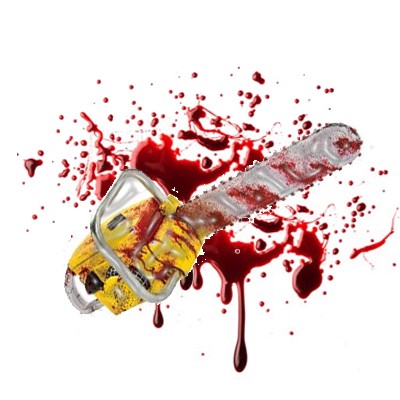
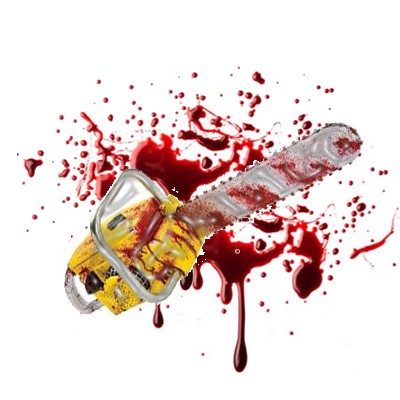
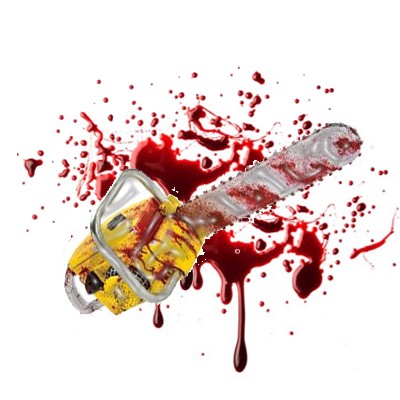
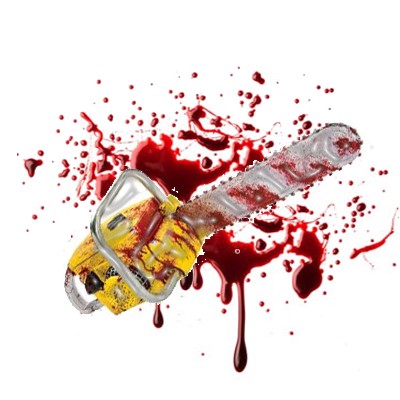
Melissa Lafsky is pleased to have been scared by your movie.
Tumblr Invents Yet Another Business Model
For a dollar, Tumblr will let you “highlight” your own Tumblr posts, which then… puts a sticker on the post that lets people know it’s extra-important. Among the more negative (and not profane) comments are “This is actually ridiculous. Why would I even do that??” and “Well done staff, this is stupid and unnecessary.” They will probably make a ton of one-dollars at this actually!
Two Altbro Hipsters on MTV's "I Just Want My Pants Back"
by Jon Blistein and RJ Cubarrubia
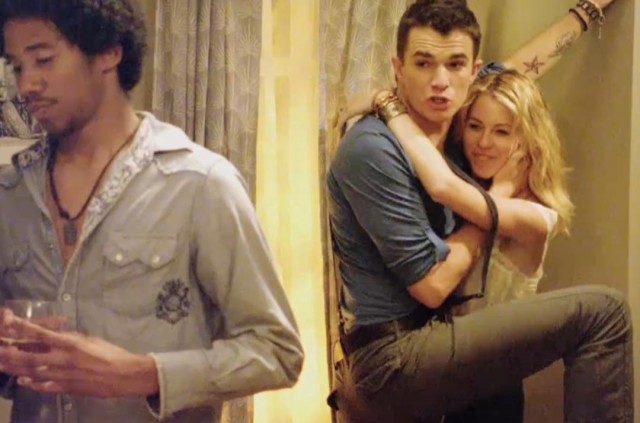
By way of introduction, RJ Cubarrubia and Jon Blistein are two altbros living in Williamsburg. They’re both trying to be music writers. RJ and Jon consider themselves quite culturally aware, but also recognize that their existence is made up of run-of-the-mill hipster clichés — hipster clichés which are now reaching larger audiences thanks to things like Bon Iver, Wes Anderson flicks, Honda commercials with Vampire Weekend, the term “buzz band,” etc. Some of this has been good; other stuff… well. Now there’s MTV’s “I Just Want My Pants Back,” a show about four attractive post-grads living in Williamsburg, rife with pop-culture references and a hipster soundtrack. As solid members of the target audience (though admittedly more sedentary and maybe less beautiful than the actual characters on the show), RJ and Jon came to “Pants” with morbid curiosity and an open mind, due to their deep love of TV. Also, they’re narcissists.
Jon: Well, this is a show about h-words — oh, screw it, it’s not worth trying to beat around this ridiculous bush. “I Just Want My Pants Back” is the show about hipsters, and its relative accuracy is impressive yet unnerving. Feeling the latter often makes it difficult to acknowledge the former, especially since it’s airing on the “Teen Mom” network and has one of the greatest lead-ins of all time, “Jersey Shore.”
In “Pants,” Jason (aka Jay) and Tina are hip young post-grads who smoke pot in bar bathrooms and talk about their sex droughts and screwy relationships in a post-Juno repartee that doesn’t seem too impossible, but maybe that’s cause you like to think you and your friends rap like that. But maybe you kinda do!
Exaggeration is always somewhat necessary in television, but what’s really neat about the first two episodes of “Pants” is that everything holding it together seems somewhat real and familiar. Premise: Jay gets laid and his titular pants stolen — and obviously finding said pants (and mystery thief, Jane) becomes a metaphor for discovering oneself. Jay’s best friend Tina wasn’t given a whole lot to do in the pilot except spit out some solid one-liners, but she showed signs of inner turmoil in episode two as she grappled with waiting for a post-fight text from her chocolatier/poet squeeze, Brett, as well as deflowering her 19-year-old intern. After the pilot I got the sense that Jay and Tina’s friendship would eventually morph into your typical will they/won’t they relationship, but I’m not so sure now — which is actually a very good thing, sitcom conventions be damned. And straight up, I like that “Pants” hits so close to home on a level that goes beyond pop references and good location scouting (not that that’s not important), and lands somewhere much more personal.
For those who haven’t yet indulged: to the preview clip!
RJ: When we first heard of this show, I was afraid. With stuff like “2 Broke Girls” and “The New Girl” lightly depicting youthful, hip, Williamsburg-inspired culture, I became almost defensive and territorial when you told me about this “more accurate” portrayal of hipster life. Not to mention the casual Wavves namedrop (and the non-casual score collaboration), some nug huffing, and a so-bored, yet positive-minded protagonist whose current life’s a chore. Holding down a shitty job as an assistant to a strangely perverted and outrageously cruel casting director (played by the always stellar Chris Parnell), Jay reaches out to hilarious, wackadoo magazine publisher Lench (who’s latest project, All Naturals, focuses on environmental sustainability and hot chicks — “think models with 70’s-era bush in hemp bikinis teaching you how to compost”), because he’s thinking of getting into “music journalism.” I’ll admit I was hating myself for not being an investment banker when they dropped that on my dome, but I ended up finding all of it endearing. Sure, it’s hard to see my lifestyle and career choices caricatured onscreen. But if it didn’t feel real, would I feel this exposed?
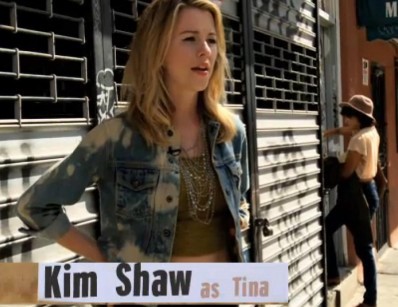
Now, hipsters vs. suits is an eternal struggle on par with cats vs. dogs, the Empire vs. the Rebel Alliance, and Lana Del Rey vs. the word “authentic.” Standing in stark contrast to Jay and Tina, their friends Eric and Stacey aren’t quite typical suits (that title goes to the sexually repressed lawyers that Jay and Tina seduce at the All Naturals launch party), but their chosen path of grad/med school over Jay and Tina’s free wheeling lifestyle represent some sort of “safer” route and perhaps even a minor case of “selling out.” Eric and Stacey aren’t culturally clueless; I’m pretty sure Eric fits Urban Dictionary’s definition of “blipster” while Stacey’s the one who initially name-drops Wavves, wanting to momentarily reclaim her punk past by celebrating her birthday at a super secret show. Instead of keeping up with an “alternative” lifestyle into early adulthood (like Jay and Tina), Eric and Stacey have chosen a domestic path with more structure and security. Tina digs the couple as they make out over the crock pot Eric gifts to Stacey, but beyond her snark lies an unsettling contrast. While Jay and Tina can act like their life choices make them too cool for adulthood, they can’t deny Eric and Stacey’s genuine happiness and fulfilment as they struggle to find their own, professional and personal. I’ll take it one step further: as a 23-year-old freelance writer living in Williamsburg who took a year off from undergrad, ditched Politics for a fresh English degree and a maybe-career in music writing, seeing just how happy Eric and Stacey are makes me wonder about my path myself.

Jon: “Pants” never makes Eric and Stacey seem lame — I mean, they make couples Wii tennis, buying a mattress and quizzing each other with flash cards of diseases seem pretty dope. Sure, Jay and Tina take some jabs at them (“They’re hip, they’re new, they’re loud,” says Jay after Stacey expresses interest in the Wavves show), but neither lifestyle is really glorified. Jay comes across looking pretty awful when he forgets to pick up the Wavves tickets from the Craigslist dude cause he was finger-banging the freaky-deaky lawyer chick instead. With that in mind, what I find odd and almost off-putting, but ultimately compelling, about this contrast is that most, if not all, attractive-young-people-finding-themselves-in-a-big-city sitcoms revolve around these relatively stable characters like Eric and Stacey, by now so familiar that you kinda know people like them in real life. So when the ostensibly directionless, “just wingin’ it” hipster is juxtaposed with these tried-and-true characters, and you can relate to him on a more personal level than you ever could with Ross or Monica or Ted Mosby, you suddenly see yourself as a trope. Ugh, and then his references are spot on, and his one-liners kill, and then you’re watching the pilot for the first time and he drops that music journalism bomb and all you can do is yell at your TV but then not turn it off. Because it’s funny, and as much as you want to believe it is, it’s actually not pandering to anyone, and the “Pants” people know that Arcade Fire isn’t performing at Music Hall of Williamsburg these days.
So it’s easy to be taken aback by “Pants” because it’s about a lifestyle and culture that prides itself on individualism and rejection of certain norms… a lifestyle that’s already become commodified, even standardized. On the surface “Pants” seems like a consequence of those latter issues, but maybe the show’s existence is proof that this cultural movement [Editor’s Note: Williamsburg is a cultural movement now???] that’s been building over the past decade-plus hasn’t so much cheapened but simply become a kind of pop culture in its own right. And there really isn’t anything necessarily wrong with that.
RJ: Kinda know people like them in real life? Try the vast overwhelming majority of my childhood and college friends. While most of them never were any sort of former “authentic punk” like Stacey, almost all of them are now young professionals working in banking or consulting, or drowning in 2L or clinicals. Yet they’re pop-cultural aware and consume with relatively careful curation; that Wavves exchange between Stacey and Jay happened in my life a few times almost exactly verbatim because my friends found Nathan Williams’ music on their own. The cultural lines that used to separate stale adulthood and “safe” career choices from hip, cool youth and a risky pursuit of passions and dreams are now blurred (I’m aware of “cool dads” but think of “superrad gnarbone dads” who take their kids to the skatepark with no helmets, let them eat cookies for breakfast, and bump Superchunk at Gymboree). I think you’re right, this is proof of a cultural movement that’s been building. [Editor’s Note: Oh my God.] Many young adults take a path with “safe” career while intelligently and actively consuming culture. They’re not hipsters but they’re not exactly suits, and they’re certainly not suits just pretending to be hip. They’re something new and perhaps they’re the result of this movement that you point out.
So the question is: will “Pants” continue this blurred line? Or will it attempt to redefine those cultural boundaries between “hip” and “safe”? On one hand, seeing Jay and Tina’s successes may inspire Eric and Stacey to reject their “safer” paths, find their “true selves,” and relapse into freewheeling hipsterdom. But if Jay and Tina realize there’s a way to enter adulthood and domesticity without sacrificing their gnarly youth and authentic art tastes, wouldn’t that be more indicative of today’s culture, which has blurred the line where Stacey, Eric, and my friends exist between hipster and suit?
Jon: I want to see where they go with this dichotomy too, but based on the endearing portrayals of both sides (I suppose props should go here to creator David Rosen, who also wrote the book the show’s based on), I can’t imagine “Pants” singling out one as more “authentic” than the other. If “Pants” went the path of glorifying the indie-artistic-doobie-blowin’ lifestyle as a means of achieving self-actualization as opposed to the aspiring-doctor/yuppie weekend warrior, well I’d be out. Luckily, I don’t think that’s what’s going on here at all.
Though I dug the pilot, episode two wasn’t as solid: Eric and Stacey’s mattress plot allowed for some good jokes, but ultimately went nowhere; and while Jay and Tina’s sexcapades were pretty funny (i.e. the bartender Tibetan throat singing her ex’s name while boinking Jay), only the “Tina & The Intern” storyline was that compelling, albeit completely unrealistic — there’s no way a virgin could ever gaff so hard and still spit such courageous game like that to his boss. And get laid. Twice. I mean “Pants” is kind of absurd, enjoyably. No one’s boss would deliver a chop-licking monologue about nailing a pregnant woman, like Parnell does — but then we’ve all had fucked-up bosses.
But that leaves me with one last obnoxiously hyper-conscious question: Do I like “Pants” more because it’s written, acted and shot quite well and tells an engaging story? Or more because I get a narcissistic kick out of seeing an sensationalized version of the culture I live in — and maybe even parts my life — on-screen depicted with enough accuracy (the devil’s in the details, bro) that I feel like my life is important and legitimate and could totally be a sitcom? I dunno, probably a lot of both. Stoked for next week.
RJ: I’d tune out immediately if “Pants” became some self-righteous arms race of authenticity or fulfillment, but I don’t think it’ll come to that either. I’m a little afraid that the show might devolve into a hookup Chronicles of Gnarnia, but Jay’s “music journalism” plot looks to be the real force here, or so we (egotistically) hope. And of course, he still needs those pants back. Let’s be real, that narcissistic joy manifests so well because of the writing: it feels dangerously close to our real lives and cultural interests, adds heavy spice (because everyone knows music writers are really huge dweebs who would be terrified to fridge fuck), and drives us to consider our own journeys (which, really, have just begun). We’ll see if our lives and this culture are television worthy in the long run, but at least right now “Pants” shows they’re entertaining and substantial enough to warrant closer examination by both hipsters and non-hipsters alike. As two obnoxious, former-suburban, Willburg-livin’ altbros, we’ll take that iota of validation.
Jon Blistein and RJ Cubarrubia spend their afternoons at Billboard and have also written at places like RollingStone.com, The L Magazine, Impose and Nerve.com.
Madonna, "Give Me All Your Luvin' (Feat. M.I.A. and Nicki Minaj)"
This new Madonna video, in which M.I.A. appears (and doesn’t do much, along with Nicki Minaj), is not as good as M.I.A.’s new video, “Bad Girls.” Considering this, and also the great video Jay-Z and Kanye West made for their song “Otis” last summer, it seems that the Bay Area hip-hop subculture known as “hyphy,” which peaked four or five years ago, is having its most lasting cultural impact in the phenomena of the dangerous-looking car tricks known as “ghost riding.”
Is Facebook Devaluing Words?
Are you worried about “the linguistic semantic detritus of our particular phase of oligarchical consumerism”? Because you probably should be.
The Federal Campaign Giving History for Susan G. Komen Founder & CEO Nancy G. Brinker
by Abe Sauer
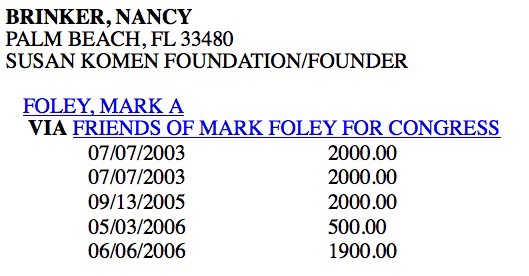
Sen. Richard Santorum (R-PA)
Sen. Bill Frist (R-TN)
Rep. Robert “Bob” Inglis (R-SC)
Sen. Kay Bailey Hutchison (R-TX)
Sen. Olympia Snowe (R-ME)
Grand Wizard Eric Cantor (R-Hell)
Rep. Pete Sessions (R-TX)
Rep. Bill McCollum (R-FL)
Sen. Susan Collins (R-ME)
Republican Leadership Council
Missouri Republican State Committee
National Republican Senatorial Committee
RNC Republican National State Elections Committee
Republican National Committee
Straight Talk America
Elizabeth Dole for President Exploratory Committee
Bush-Cheney 2000 Compliance Committee
Bush-Cheney ’04 (Primary)
Afghanistan & Iraq Veterans for Congress PAC
Sen. Arlen Specter (?-PA)
Rep. Kay Granger (R-TX)
Sen. John McCain (R-AZ)
Rep. E. Clay Shaw (R-FL)
Rep. Mark Foley (R-Boys Locker Room)
Sen. Mel Martinez (R-FL)
The Komen Foundation announced this morning it would restore funding to Planned Parenthood: “We have been distressed at the presumption that the changes made to our funding criteria were done for political reasons or to specifically penalize Planned Parenthood. They were not.”
Abe Sauer is the author of the book How to be: North Dakota. He is on Twitter. Email him at abesauer @ gmail.com.
Don't Catch Obesity

Uh oh: “We’ve heard obesity can be ‘spread’ between friends when we copy each other’s eating habits, but a new study in mice suggests obesity could actually be infectious. That’s right, infectious. As in, something you can catch. In the study, mice engineered to have a particular immune deficiency developed fatty liver disease and got fatter when fed a Western-style diet. But strikingly, when these immune-deficient mice were put in the same cage as healthy mice, the healthy mice started to come down with symptoms of liver disease, and also got fatter.”
Paul Auster Is 65
Paul Benjamin Auster, a Brooklyn novelist long before that term inspired yawns and derision, turns 65 today. I’m partial to Moon Palace, but The New York Trilogy is also pretty great.
Vermont Prison Inmate Plays Good Practical Joke
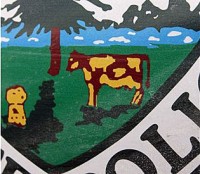
“State officials Thursday pointed to the failure of the quality assurance office within the Vermont Correctional Industries Print Shop in St. Albans to detect a prisoner-artist’s addition made four years ago to the traditional state police logo. A spot on the shoulder of the cow in the state emblem was modified into a pig. An investigation has begun into how the computer program was improperly modified to insert the image, Vermont Corrections Commissioner Andy Pallito said.”
— Some thirty Vermont State police cars have been displaying the subtle joke of a clever prison inmate for the past four years. New decals are being produced (at a cost of 780 tax-payer dollars!) The pigs will be removed. What the fuzz have failed to notice, though, is how much the “O” in “Police” looks like a donut. [Via]
You Are Powerless Over Your Twitter Addiction
dan abrams
— Dan Abrams (@danielabrams) March 30, 2011
“Tweeting or checking emails may be harder to resist than cigarettes and alcohol, according to researchers who tried to measure how well people could resist their desires. They even claim that while sleep and sex may be stronger urges, people are more likely to give in to longings or cravings to use social and other media.”
